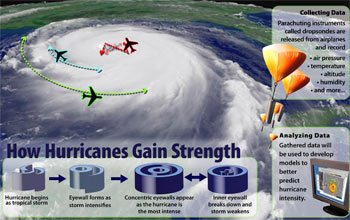All Images
News Release 05-162
Number of Category 4 and 5 Hurricanes Has Doubled Over the Past 35 Years
Sea-surface temperatures are also on the rise
This material is available primarily for archival purposes. Telephone numbers or other contact information may be out of date; please see current contact information at media contacts.

New Orleans houses are swamped by floodwaters after Hurricane Katrina.
Credit: Liz Roll

Debris is scattered on the beach in Biloxi, Miss., after Hurricane Katrina.
Credit: FEMA/Mark Wolfe

Predicting hurricane direction has improved immensely over the years, but predicting hurricane strength and intensity is still imprecise at best. NSF supports the RAINEX program to better understand hurricane intensity, which can drastically change in a stretch of hours. Scientists fly through the storms in airplanes equipped with Doppler radar and parachuting instruments to measure humidity, wind speed, direction, temperature, atmospheric pressure and more. The RAINEX project is unique in its attempt to simultaneously measure the hurricane eye and swirling rainbands to learn how the two interact and impact a hurricane's intensity.
Credit: Nicolle Rager Fuller, National Science Foundation
Download the high-resolution JPG version of the image. (352 KB)
Use your mouse to right-click (Mac users may need to Ctrl-click) the link above and choose the option that will save the file or target to your computer.


